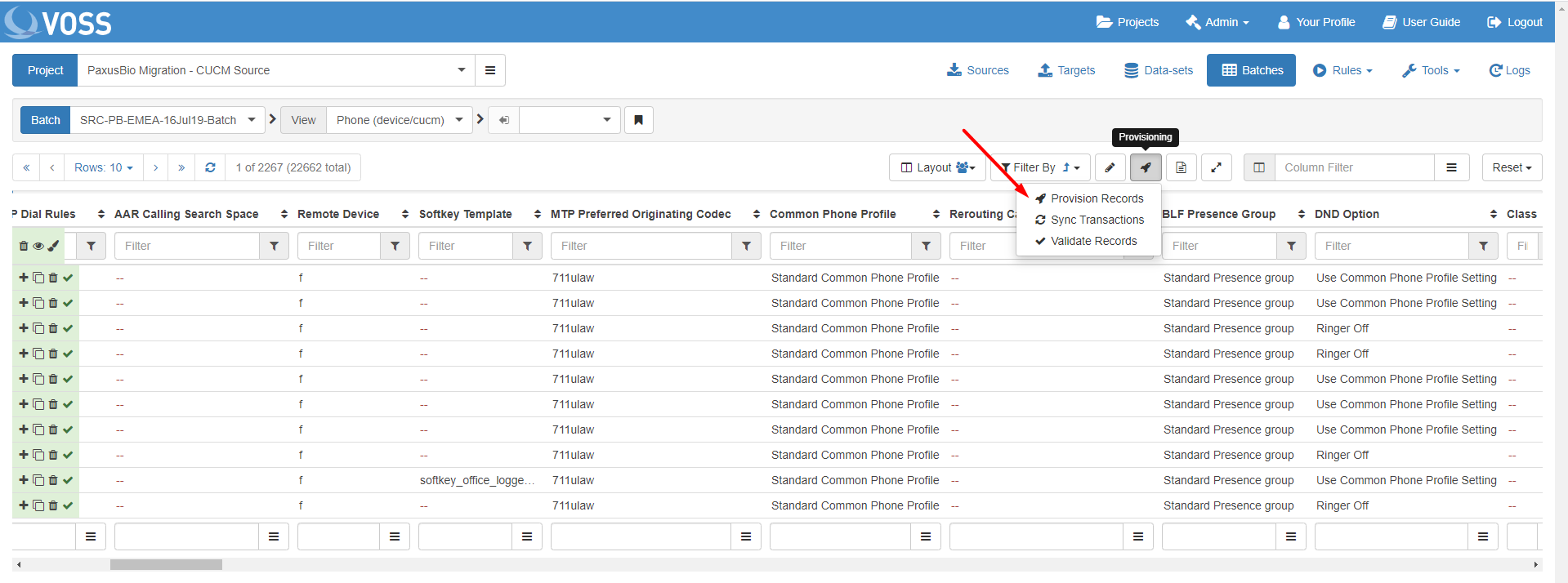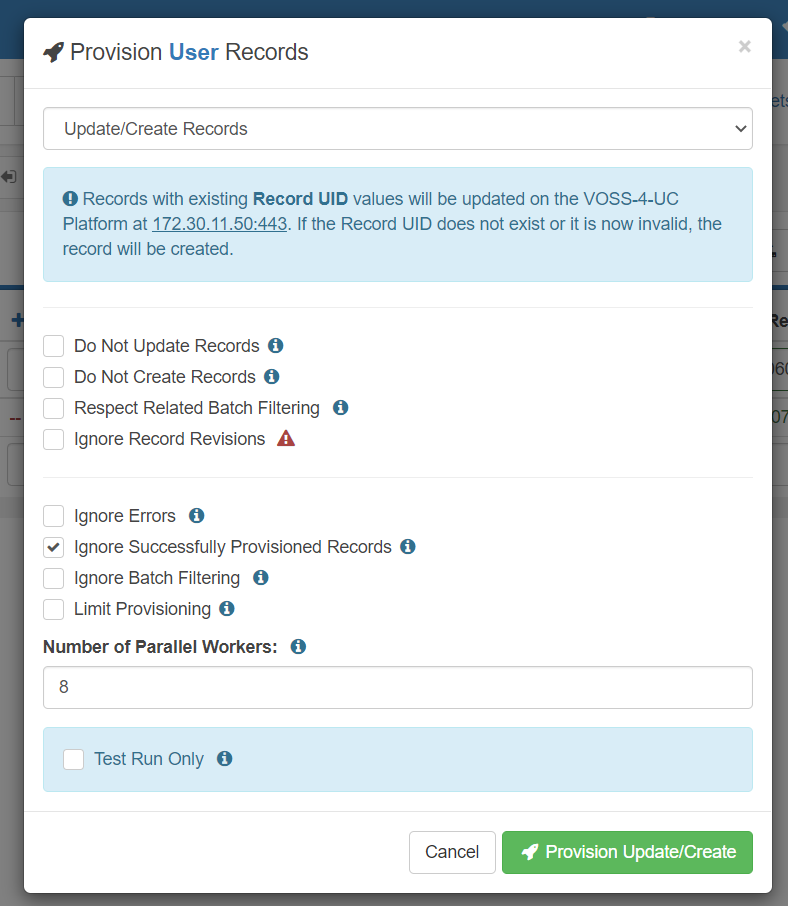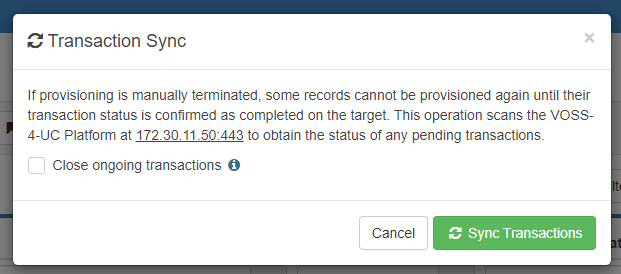Provisioning a Batch View¶
Batch View records can be provisioned to the target server. To begin, click the rocket icon in the menu bar above the field names and then Provision Records.
Updating and Creating records¶
To update or create records, click the Update/Create Records option. This will attempt to update or create the records on the target server. If a record’s Record UID field has a value it will be updated. If the record does not exist any more, or the Record UID field is empty, it will be created. Successfully updated/created records will be retained in the batch and marked as “updated” or “created” in their Provisioning Status field respectively.
Choose the provisioning options:
Ignore Errors: If ticked the process will continue even if a record fails to provision. An input will display allowing a regular expression of ignorable error messages to be specified, otherwise all errors will be ignored. The error message is the value which is placed in the Provisioning Notes column by provisioning.
Ignore Batch Filtering: The current batch filtering on the View will be ignored, i.e. all records will be provisioned.
Ignore Already Provisioned Records: Records which have already been successfully provisioned for the chosen provision method will be excluded from the process (i.e. if created or updated are in the Provisioning Status field).
Respect Related Batch Filtering: Any related record batch view filtering will be applied while provisioning.
Do Not Update Records: Records with a Record UID field value are excluded from the process.
Do Not Create Records: Records without a Record UID field are excluded from the process. If a record with a UID is updated but it no longer exists on the target platform, it will fail.
Ignore Record Revisions: Suppresses the default record-updating behaviour, where only the modified record values are sent to the server. For advanced use only.
Limit Provisioning: Limits the provisioning to only a certain amount of records (good to test the provision behaviour before committing to all records).
Number of Parallel Workers: The number of records to provision in parallel, allowing control of the load on the target platform.
Test Run Only: If enabled, the VOSS Automate target will be queried for information such as hierarchies, devices and macro results, but no actual provisioning will take place.
Once the options have been chosen, click the Provision button to begin the process. A Log entry will be created with detailed information about the provisioning of each separate record.
Deleting records¶
To delete records, click the Delete Records option. This option will attempt to delete the records on the target server. Successfully deleted records will be retained in the batch and marked as “deleted” in their Provisioning Status field. If a record’s Record UID field is empty, it will fail provisioning. The provisioning options displayed work the same as Update / Create.
Moving records¶
To delete records, click the Delete Records option. This option will attempt to move the records to the value of the VOSS Hierarchy field on the target server. Successfully moved records will be marked as “moved” in their Provisioning Status field. If a record’s Record UID field is empty, it will fail provisioning. The provisioning options displayed work the same as Update / Create.
Resetting records¶
To delete records, click the Delete Records option. This option will attempt to device reset the records on the target server. Successfully reset records will be marked as “reset” in their Provisioning Status field. If a record’s Record UID field is empty, it will fail provisioning. The provisioning options displayed work the same as Update / Create.
Searching for records¶
To perform most provisioning operations, the Record UID field must filled in for a record, but for some migrations this value may not be known. To search for records on the target platform, click the Search for Records option.
An input Search Fields is presented. This allows selecting a list of key fields in the Batch View to use when searching for the records on the target platform. By default this input is populated with the most appropriate key field, but is not guaranteed to always be correct.
Successfully found records will have their Record UID field updated, otherwise it will fail provisioning. The provisioning options displayed work the same as Update / Create.
Note
The VOSS Hierarchy and Device field values of a record are used to narrow down the search.
Syncing Transactions¶
If provisioning is manually terminated, some records cannot be provisioned again until their transaction status is confirmed as completed on the target. The Sync Transactions operation scans the target to obtain the status of any pending transactions.
To begin, click the rocket button again in the menu bar and then Sync Transactions:
The close ongoing transactions option will close a transaction (with failure) in VOSS Migrate even if it still processing on the target, allowing the record to be provisioned again.
Note
Syncing will fail if the target is currently being provisioned.




